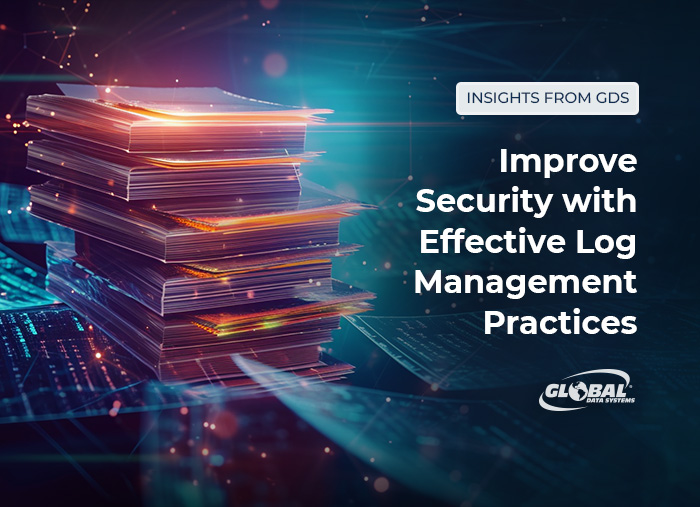How to Improve Security with Effective Log Management Practices
Security log files are a rich source of information about IT systems, providing critical insight into unusual login attempts, system changes, access requests and other anomalous activities that may have security implications. However, the sheer volume and diversity of logs generated across today’s complex IT environments makes it difficult to analyze and use that information.

Text-based logs are generated from myriad sources, including computer systems, applications and endpoint devices. Log analysis enables security teams to determine if their systems have been breached, making it a proven, proactive approach to detecting intrusions and safeguarding data. It’s why industry regulations and data privacy laws such as GDPR, HIPAA and PCI DSS explicitly mandate log management practices.
A Growing Problem
Traditional manual analysis techniques are no longer adequate for effective log management, however. The average organization manages approximately 135,000 networked devices. Research shows that a typical midsize organization can get more than 10,000 device-generated log entries daily. Considering it can take about half an hour to analyze one log file, IDC estimates that most organizations only investigate about 20 percent of their daily log files.
There’s no relief in sight, either. The number of log files being created continues to increase steadily due to several factors. Cyberattacks are growing in both number and sophistication. Organizations are adding more network-connected endpoints to support operational goals. Data growth, especially in cloud environments, is driving increases in log volumes.
In fact, cloud computing makes log management more challenging in several ways. Because the cloud involves distributed systems and microservices, logs are generated from multiple locations and sources. Collecting, aggregating and correlating logs from distributed systems can be a long, tedious process. Additionally, cloud providers often have tenancy agreements that limit an organization’s ability to access logs and underlying systems.
Integration of artificial intelligence (AI), machine learning (ML) and predictive analytics can help organizations conduct real-time analysis of growing log files. AI algorithms excel at detecting unusual patterns and behaviors within log data. ML empowers systems to learn and adapt over time, continuously improving their ability to discern between normal and malicious activities.
SIEM and SOAR
Security information and event management (SIEM) and security orchestration, automation, and response (SOAR) solutions are increasingly used to speed the aggregation and analysis of log data from multiple sources. SIEM solutions collect, correlate and analyze log data from various sources in a centralized platform. SOAR platforms complement SIEM by automating and centralizing the logging process.
Integration of artificial intelligence (AI), machine learning (ML) and predictive analytics can help organizations conduct real-time analysis of growing log files.
SIEM tools use predefined rules and algorithms detect and respond to security incidents in real time. Alerts are automatically prioritized based on identifiable characteristics. This eliminates a good deal of the time, manpower and expense required to comb through large volumes of log data manually.
Once logs have been collected, SOAR solutions automatically aggregate and move log information from various sources into a centralized repository. AI-powered algorithms then identify patterns, anomalies and potential threats within the data, drastically reducing the time between detection and mitigation.
While SIEM and SOAR solutions offer compelling benefits, they can be difficult to deploy and manage. For example, integration with diverse applications, network devices and security tools often requires a great deal of customization to fit an organization’s unique IT infrastructure. Additionally, they require regular tuning, updates and maintenance to remain effective against evolving threats.
Advanced Log Management for Real-Time Threat Detection
GDS can remove many of the barriers to automated log management. Through our suite of managed security services, we implement and manage the tools you need to identify and respond to potential threats in real time. Contact us to set up a confidential consultation.
Benefits of Managed IT Services from Global Data Systems
- Strategic Managed IT: We help you solve your technology related business problems.
- Connectivity: We get you reliable, secure connectivity anywhere in the western hemisphere in 48 hours.
- Support: When you need help simply call our 24x7x365 support number.
- Billing: Instead of managing hundreds of vendors - get one, easy to read bill from GDS.
Contact Managed Services Provider, Global Data Systems >
